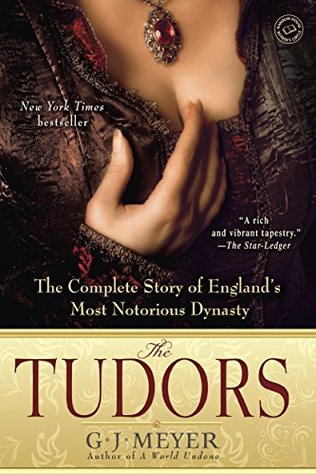More on this book
Community
Kindle Notes & Highlights
for present purposes one will stand in for all: Eamon Duffy’s The Stripping of the Altars.
If there are still Dudleys in Italy today, it is easy to believe that they must be dashing figures, and having fabulous adventures.
Fraser, Antonia. The Wives of Henry VIII. Vintage, 1994.
Starkey, David. Six Wives: The Queens of Henry VIII. HarperCollins, 2003.
Haigh, Christopher. Elizabeth I, 2nd ed. Longman, 1998.
Hibbert, Christopher. The Virgin Queen. Viking, 1990. Loades, David. Elizabeth I. Hambledon & London, 2003. Neale, J. E. Queen Elizabeth I. Pelican, 1960. Smith, Lacey Baldwin. Elizabeth Tudor. Little, Brown, 1975. Williams, Neville. Elizabeth I. Weidenfeld & Nicolson, 1972.
It explains why the 118 years of Tudor rule have so often been depicted as the golden age of English history, the period when England ceased to be a semi-backward island on the fringe of Europe and set forth on the high road to global greatness.
For a tiny number of extremely lucky or crafty families, of course, the Tudor era could scarcely have been more fruitful. These were the families that gathered up into their own hands, thanks either to royal favor or skillful speculation in real estate, the immense wealth that Henry VIII was so recklessly throwing away. Two centuries of privilege would transform them into the genteel teasipping characters who populate the novels of Jane Austen—and still own vast expanses of countryside in an overcrowded England today. But for most people—for almost all of the ordinary people—it was a
...more
It was to tell both sides that The Tudors: The Complete Story of England’s Most Notorious Dynasty was written.
Imagine that the first Tudor monarch, Henry VII, is able to view the state of England at the time of his granddaughter Elizabeth’s death. What might he think of how it all turned out?


